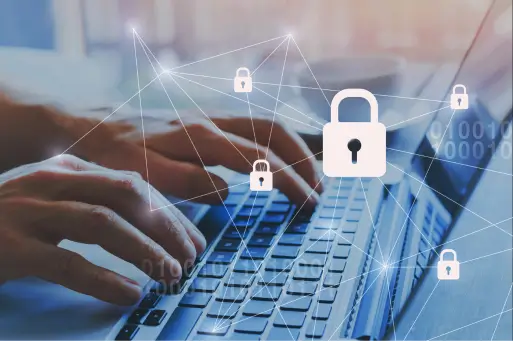Data Loss Prevention (DLP) Services
Protect and Secure Sensitive Data Across Your Organization
Data Loss Prevention (DLP) is a comprehensive security strategy designed to prevent the unauthorized access, sharing, or leakage of sensitive data. In today’s digital landscape, where data moves across endpoints, networks, and cloud environments, organizations must be vigilant in safeguarding critical information from potential breaches, data theft, or accidental exposure. DLP solutions continuously monitor, detect, and block unauthorized activities to ensure data integrity and regulatory compliance.
Why DLP is Essential
With increasing digital threats and sophisticated attacks, preventing data breaches is a top priority for businesses. Whether data is in motion, in use, or at rest, the risk of unauthorized access or leakage is ever-present. DLP enables organizations to:

Identify Sensitive Information
Classify and locate sensitive data across on-premises systems & cloud environments.

Prevent Accidental Data Exposure
Avoid unintentional sharing or leakage of sensitive information by monitoring user activity.

Monitor and Protect Data
Keep track of data access and transfer activities, ensuring protection against internal and external threats.

Ensure Regulatory Compliance
Align with data privacy laws and industry regulations such as GDPR, HIPAA, and PCI-DSS.
How DLP Works?
DLP safeguards data throughout its lifecycle—whether it’s at rest, in motion, or in use—by continuously monitoring, detecting, and preventing suspicious activities. Here’s how it works:
Data in Motion
DLP solutions analyze network traffic to detect any unauthorized attempts to transfer sensitive data between networks or to the cloud, ensuring that data in transit is secure.
Data in Use
Monitor and flag unauthorized actions while data is being accessed, processed, or modified. DLP solutions help prevent insider threats or accidental data leaks during these activities.
Data at Rest
Encryption, access control, and data retention policies are employed to protect archived data stored on devices, servers, or cloud environments from unauthorized access or theft.
How DLP Works?
DLP safeguards data throughout its lifecycle—whether it’s at rest, in motion, or in use—by continuously monitoring, detecting, and preventing suspicious activities. Here’s how it works:
Data in Motion
DLP solutions analyze network traffic to detect any unauthorized attempts to transfer sensitive data between networks or to the cloud, ensuring that data in transit is secure.
Data in Use
Monitor and flag unauthorized actions while data is being accessed, processed, or modified. DLP solutions help prevent insider threats or accidental data leaks during these activities.
Data at Rest
Encryption, access control, and data retention policies are employed to protect archived data stored on devices, servers, or cloud environments from unauthorized access or theft.
Common Causes of Data Leaks
DLP addresses several common data leakage scenarios, including:
Insider Threats : Privileged users or attackers with compromised accounts attempting to transfer sensitive data outside the organization.
External Attacks : Cybercriminals using phishing, malware, or other tactics to gain access to sensitive data and exfiltrate it.
Accidental Exposure : Employees inadvertently exposing sensitive data by losing devices, providing open internet access to sensitive files, or failing to follow security policies.

Our DLP Capabilities
At Progressive, we offer a robust set of DLP capabilities designed to protect your organization’s most critical data:
Securing Data in Motion
Technologies at the network edge monitor and block unauthorized data transfers in violation of security policies.
Endpoint Security
Endpoint-based solutions control information transfer between users, systems, and external parties. These tools can block unauthorized communications in real time and provide feedback to users.
Data at Rest Protection
Import your target employees' email IDs via manual entry or Active Directory (AD) sync, ensuring accurate and focused simulations.
Securing Data in Use
DLP systems monitor and flag unauthorized activities, whether intentional or accidental, during data access or processing.
Data Identification
We help classify and identify which data is sensitive using advanced techniques, including manual rule application, metadata, and machine learning.
Leak Detection
Our DLP solutions, along with security tools like IDS, IPS, and SIEM, detect anomalous or suspicious data transfers and alert security teams to take immediate action.
